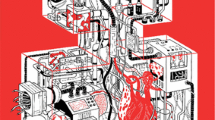Abstract
From the very beginning of computers, universality has been the core focus in the building of computing machines, such as the universal Turing machine, von Neumann architecture, random-access machines, and universal circuits. Academia has taken universality as the primary principle ever since. However, the Curse of universality, implied from L. G. Valiant’s Universal Circuit, states that computers based on logic circuits cannot be both universal and efficient, as the cost of universality is Ω(n log2n). Though the Curse has been hidden by the rapid advancement of semiconductor technologies, it has been wielding its effects noticeably in recent years. Due to the ending of Dennard scaling and Moore’s law, general-purpose processors leave less room for improvement. Therefore, domain-specific architectures (DSAs), such as deep learning processors, have been exploding, leading to the new golden age of computer architectures. For DSAs, universality is traded off for optimal efficiency. However, we predict that universality will once again be a major concern for post-golden-age computers. In this paper, we discuss how much universality could an efficient computer keep. As a rescue to the Curse, we define and discuss quasi-universal architectures. Quasi-universal architectures can solve any computable problem and are efficient for a wide range of problems. The proposed Recursive-Encapsulated (RENC) architecture achieves maximal universality while keeping optimal efficiency as found in specialized architectures. The discovery of RENC suggests that current golden-age architectures are not Pareto optimal.
Similar content being viewed by others
References
Hennessy J L, Patterson D A. A new golden age for computer architecture. Commun ACM, 2019, 62: 48–60
Turing A M. On computable numbers, with an application to the entscheidungsproblem. Proc London Math Soc, 1937, s2–42: 230–265
von Neumann J. First draft of a report on the EDVAC. IEEE Ann Hist Comput, 1993, 15: 27–75
Valiant L G. Universal circuits (preliminary report). In: Proceedings of the 8th Annual ACM Symposium on Theory of Computing, Hershey, 1976. 196–203
Esmaeilzadeh H, Blem E, Amant R S, et al. Dark silicon and the end of multicore scaling. In: Proceedings of the 38th Annual International Symposium on Computer Architecture (ISCA), 2011. 365–376
Chen T, Du Z, Sun N, et al. DianNao: a small-footprint high-throughput accelerator for ubiquitous machine-learning. In: Proceedings of the 19th International Conference on Architectural Support for Programming Languages and Operating Systems (ASPLOS), 2014. 269–284
Knuth D E. The Art of Computer Programming, Volume 1: Fundamental Algorithms. 3rd ed. Redwood City: Addison Wesley Longman Publishing Co., Inc., 1997
Savage J E. Models of Computation: Exploring the Power of Computing. Redwood City: Addison-Wesley Longman Publishing Co., Inc., 1997
Arora S, Barak B. Computational Complexity: A Modern Approach. Cambridge: Cambridge University Press, 2009
Alhassan M Y, Günther D, Kiss Á, et al. Efficient and scalable universal circuits. J Cryptol, 2020, 33: 1216–1271
Zhao S, Yu Y, Zhang J, et al. Valiant’s Universal Circuits Revisited: An Overall Improvement and a Lower Bound. Technical Report 943, 2018
Liu H, Yu Y, Zhao S, et al. Pushing the limits of valiant’s universal circuits: simpler, tighter and more compact. In: Proceedings of Annual International Cryptology Conference, 2021. 365–394
Backus J. Can programming be liberated from the von Neumann style? Commun ACM, 1978, 21: 613–641
Kung H T. Why systolic architectures? Computer, 1982, 15: 37–46
Kiss Á, Schneider T. Valiant’s universal circuit is practical. In: Proceedings of Annual International Conference on the Theory and Applications of Cryptographic Techniques. Berlin: Springer, 2016. 699–728
Lipmaa H, Mohassel P, Sadeghian S. Valiant’s universal circuit: improvements, implementation, and applications. Cryptology ePrint Archive, Report 2016/017, 2016. https://ia.cr/2016/017
Neary T, Woods D. The complexity of small universal Turing machines: a survey. In: Proceedings of Theory and Practice of Computer Science, 2012. 385–405
Kelly P H J. Advanced Computer Architecture, Chapter 1.3: the stored program concept and the Turing Tax. 2020. https://www.doc.ic.ac.uk/~phjk/AdvancedCompArchitecture/Lectures/pdfs/Ch01-part4-uringTaxDiscussion.pdf
Edwards C. Moore’s law: what comes next? Commun ACM, 2021, 64: 12–14
Chen Y, Luo T, Liu S, et al. DaDianNao: a machine-learning supercomputer. In: Proceedings of the 47th Annual IEEE/ACM International Symposium on Microarchitecture, 2014. 609–622
Zhao Y, Fan Z, Du Z, et al. Machine learning computers with fractal von Neumann architecture. IEEE Trans Comput, 2020, 69: 998–1014
Kornaropoulos E M, Tollis I G. Algorithms and bounds for overloaded orthogonal drawings. J Graph Algorithms Appl, 2016, 20: 217–246
Valiant L G. Universality considerations in VLSI circuits. IEEE Trans Comput, 1981, C-30: 135–140
Lanzerotti M Y, Fiorenza G, Rand R A. Microminiature packaging and integrated circuitry: the work of E. F. Rent, with an application to on-chip interconnection requirements. IBM J Res Dev, 2005, 49: 777–803
Beigel R, Gill J. Sorting n objects with a k-sorter. IEEE Trans Comput, 1990, 39: 714–716
Ajtai M, Komlós J, Szemerédi E. An O(n log n) sorting network. In: Proceedings of the 15th Annual ACM Symposium on Theory of Computing, 1983. 1–9
Zhao Y, Du Z, Guo Q, et al. Cambricon-F: machine learning computers with fractal von Neumann architecture. In: Proceedings of ACM/IEEE 46th Annual International Symposium on Computer Architecture (ISCA), 2019. 788–801
Acknowledgements
This work was partially supported by National Key Research and Development Program of China (Grant No. 2018AAA0103300), National Natural Science Foundation of China (Grant Nos. 61925208, 62102398, U19B2019), Strategic Priority Research Program of Chinese Academy of Science (Grant No. XDB32050200), Beijing Academy of Artificial Intelligence (BAAI) and Beijing Nova Program of Science and Technology (Grant No. Z191100001119093), CAS Project for Young Scientists in Basic Research (Grant No. YSBR-029), and Youth Innovation Promotion Association CAS and Xplore Prize. The authors would like to thank Qian LI from Institute of Computing Technology, Chinese Academy of Sciences, and Yu XIA from Peking University for their constructive comments in relation to this work.
Author information
Authors and Affiliations
Corresponding author
Rights and permissions
About this article
Cite this article
Zhao, Y., Du, Z., Guo, Q. et al. Rescue to the Curse of universality. Sci. China Inf. Sci. 66, 192102 (2023). https://doi.org/10.1007/s11432-021-3596-x
Received:
Revised:
Accepted:
Published:
DOI: https://doi.org/10.1007/s11432-021-3596-x




